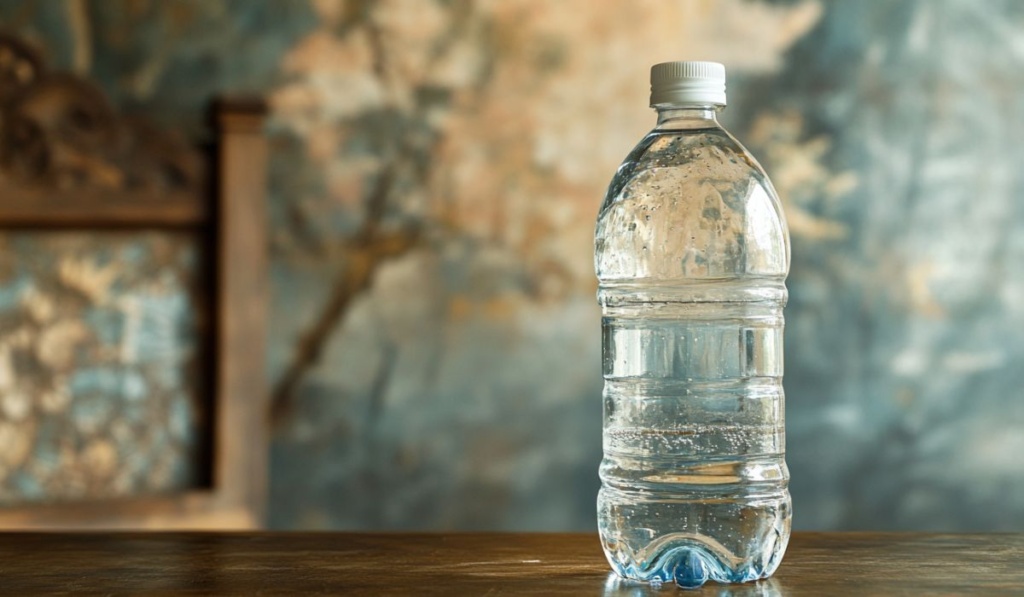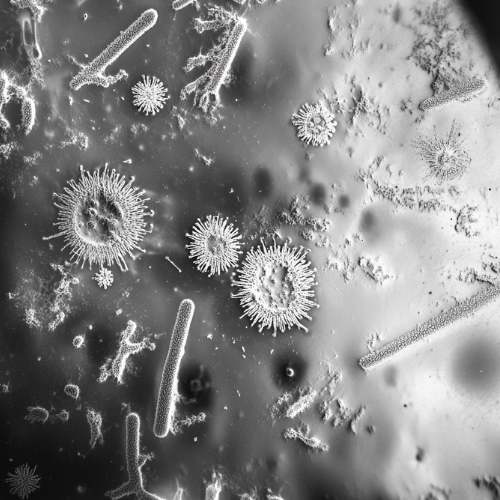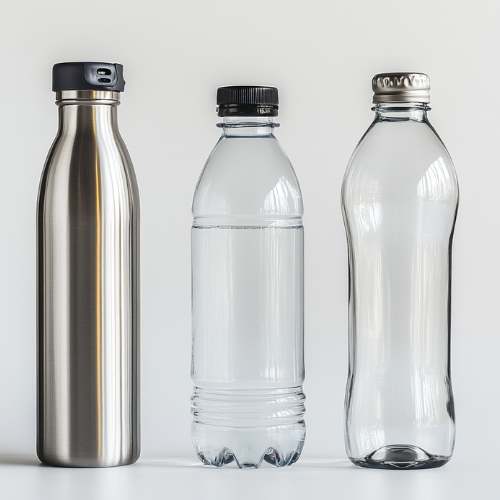Is Your Water Bottle Growing Mould? Here’s How to Prevent It
The Hidden Dangers Lurking in Your Water Bottle
As a certified health coach, I often tell everyone who is keen to listen how important it is to stay hydrated. We all know that drinking water is PARAMOUNT to a healthy lifestyle.
At home, we filter our water TWICE. We have been double filtering for years now. Why? To ensure the we do the best we can to remove even the tiniest contaminants, if possible. We like to provide an extra layer of purification for the cleanest, safest drinking water possible.
So I’m keen to share another important aspect of healthy hydration. Reusable water bottles are great for the environment and your health, but they can hide a nasty secret.
Mould and bacteria love the moist, dark space inside your water bottle. If you don’t clean it well, it can cause health problems such as gastrointestinal issues, including nausea, vomiting, and diarrhea.
In some cases, it may lead to more serious infections, especially for people with weakened immune systems.
When’s the last time you totally emptied your bottle? Most of us keep topping up our drinks all day long… Because of this, our bottles hardly EVER get the chance to dry out completely. All that constant dampness is a wonderful environment for germs to thrive.

Why mould and bacteria thrive in water bottles
Mould and bacteria grow best in places that are warm, wet, and dark.
Your water bottle is the perfect spot for them. If you don’t clean it often, these tiny organisms can multiply quickly!
Health risks associated with the nasty mould and bacteria
1. Infections and illnesses
Mould and bacteria can cause infections. These can range from minor skin irritations to serious stomach problems. Drinking from a dirty bottle can make you ill.
2. Respiratory problems
Breathing in mould spores can cause breathing problems, especially if you have asthma or other lung issues. You might start coughing, wheezing, or feel short of breath.
3. Allergic reactions
Mould can also cause allergic reactions. You might start sneezing, itching, or get watery eyes. In severe cases, it can lead to mould-induced asthma.
The types of mould and bacteria found in water bottles

Mould is a type of fungus that grows in tiny threads called hyphae. It likes damp, warm places and can be black, green, or white.
Bacteria are tiny, single-celled organisms. Some bacteria are good for you, but others can cause diseases and infections.
Types of mould found in water bottles
Common moulds in water bottles include Aspergillus, Penicillium, and Cladosporium. Each type can cause different health problems and needs specific cleaning methods to get rid of it.
Common bacteria in water bottles
Bacteria like E. coli, Salmonella, and Staphylococcus can live in dirty water bottles. These germs can make you very ill if you drink them.
Learn to inspect your water bottle regularly: 16 tips
Here’s how to make sure yours stays clean and safe:
- Colour: Look for any unusual spots or streaks, especially black, green, or brown.
- Cloudiness: If your bottle is transparent, check for any foggy appearance in the material. Residue: Watch for any build-up, particularly in seams or corners.
- Build-up: Watch for any build-up, particularly in seams or corners.
- Musty smells: Even when dry, a contaminated bottle may smell unpleasant.
- Persistent smells: If odours linger after washing, it could indicate trapped bacteria.
- Slimy texture: Run your finger along the inside. Any slippery feeling could indicate biofilm formation!
- Rough patches: Unexpected texture changes might signal mineral build-up or mould growth.
- Inspect against the light: Hold your bottle up to a window for the best visibility.
- Inspect using a flashlight: Use a small flashlight to illuminate the interior, especially for opaque bottles.
- Threads on the cap: Unscrew and examine closely, as this area often traps moisture.
- Spouts and straws: These are prime spots for mould growth due to constant moisture.
- Seals and gaskets: Check rubber seals for signs of wear or contamination.
- Crevices and corners: Pay extra attention to areas where parts join or in any decorative grooves.
- Use a mall mirror: Use to view hard-to-see areas like the bottom of deep bottles.
- Cotton swabs: Gently swab suspicious areas to check for residue.
- Pipe cleaners: Great for inspecting and cleaning narrow openings or straws.
Cleaning tips to keep your water bottle safe!
1. Daily cleaning routine
Rinsing with hot water and soap
- Rinse your water bottle with hot water and soap every day.
- Make sure to scrub all parts of the bottle, including the cap and straw.
- Use a bottle brush to reach the bottom and sides effectively.
- Pay extra attention to the threading on the bottle and cap.
QUICK sanitise option!
- For a quick sanitise, fill the bottle with very hot water (not boiling) and let it sit for a few minutes before rinsing.
- This can be done in addition to soap cleaning for extra peace of mind.
2. Deep cleaning techniques
Use white vinegar
- White vinegar is a natural cleaner that can kill mould and bacteria.
- Fill your bottle with a mix of equal parts water and vinegar.
- Let it sit for a few hours, then rinse it well.
- For stubborn odors, leave the solution overnight.
Use bicarbonate of soda (baking soda)
- Bicarbonate of soda is another natural cleaner.
- Mix a few tablespoons of bicarbonate of soda with water to make a paste.
- Scrub the bottle with this paste, then rinse it well.
- This method is particularly good for removing stains and odors.
Denture tablets
- Drop a denture cleaning tablet into your water bottle filled with warm water.
- Let it fizz and sit for about 15-30 minutes.
- Rinse thoroughly afterwards.
- This method is great for hard-to-reach places in oddly shaped bottles.
Dishwasher (if bottle is dishwasher safe)
- Place your water bottle on the top rack of the dishwasher.
- Remove any non-dishwasher safe parts like certain types of lids or straws.
- Use this method weekly for a thorough, hands-off clean.
3. Drying your water bottle
Importance of thorough drying
- Drying your bottle well is very important to stop mould from growing.
- After cleaning, leave your bottle open and upside down to air dry completely.
- Avoid closing the lid until the bottle is 100% dry inside.
Best practices for drying
- Use a clean tea towel to wipe down the bottle and its parts.
- Make sure everything is completely dry before you put it back together and store it.
- For faster drying, use a bottle drying rack that allows air circulation.
- If possible, store the bottle with the lid off to prevent moisture buildup.
Dealing with hard-to-dry parts
- For straws and spouts, use pipe cleaners to ensure the insides are dry.
- Shake out excess water and use compressed air for quick drying of small parts.
4. Maintenance tips
Regular deep cleans
- Aim for a deep clean using vinegar or baking soda at least once a week.
Replace when necessary
- If your bottle develops persistent odors or stains, it might be time to replace it.
- Check the manufacturer’s guidelines for the lifespan of your specific bottle.
Avoid harmful practices
- Don’t use extremely hot water on plastic bottles as it can release chemicals.
- Avoid using bleach, as it can be harmful if not rinsed properly and may degrade some bottle materials.
Remember, a clean water bottle not only tastes better but is also crucial for your health. Make cleaning your water bottle a part of your daily routine!
Material matters: choosing the right water bottle

1. Plastic water bottles
Pros
- Lightweight and portable
- Affordable and widely available
- Often dishwasher-safe
- Durable and less likely to break if dropped
Cons
- Can retain bacteria and odours over time
- May contain harmful chemicals like BPA or BPS
- Not environmentally friendly, especially if not recycled properly
- Can leach plastic taste into water, especially when exposed to heat
2. Stainless steel water bottles
Pros
- Extremely durable and long-lasting
- Naturally antimicrobial, resisting bacteria growth
- Don’t retain flavours or odours
- Often insulated, keeping drinks cold or hot for hours
- Environmentally friendly and recyclable
Cons
- Heavier than plastic bottles
- More expensive initially
- Can dent if dropped
- Not transparent, making it harder to see water level
3. Glass water bottles
Pros
- Non-toxic and don’t leach chemicals
- Don’t retain flavours or odours
- Easy to clean and dishwasher-safe
- Allow you to see the water level easily
- Often come with protective silicone sleeves
Cons
- Fragile and can break if dropped
- Heavier than plastic bottles
- Not as good at insulating temperature
- More expensive than basic plastic bottles
So, which one? Let me help you: consider these factors when choosing
- Intended use: Consider where and how you’ll use the bottle most often
- Durability: Think about how rough you are with your belongings
- Maintenance: Some materials require more careful cleaning than others
- Temperature retention: If you want to keep drinks hot or cold, consider insulated options
- Environmental impact: Consider the lifecycle and recyclability of the material
- Health concerns: If you’re worried about chemicals, glass or stainless steel might be better options
Remember, the best water bottle is one that you’ll actually use regularly. That simple!
Make sure to keep your reusable water bottle clean

Keeping your reusable water bottle clean is very important to stop mould and bacteria from growing. Clean it regularly, dry it well, and do a deep clean every so often to keep it safe to use.
By following these tips, you can enjoy the benefits of a reusable water bottle without risking your health.
Stay vigilant, stay clean, and stay hydrated.
Research, bibliography and helpful links:
- Watanabe M, Ohnishi T, Araki E, Kanda T, Tomita A, Ozawa K, et al. Characteristics of bacterial and fungal growth in plastic bottled beverages under a consuming condition model. J Environ Sci Health A Tox Hazard Subst Environ Eng. 2014; 49(7):819–26.
- Hariharan AV, Sankar MM. Daily Use Water Bottles as a Hub for Microbial Population: A Comparative Study of PET vs. Stainless Steel Water Bottles and Outcome of Washing Strategy Intervention. J Pharm Bioallied Sci [Internet]. 2024 [cited 2024 Aug 25]; 16(Suppl 2):S1242–5. Available from: https://www.ncbi.nlm.nih.gov/pmc/articles/PMC11174293/.
- Viljoen M, Claassen N. Pathophysiological aspects of exposure to dampness-associated indoor mould and mycotoxins: A mini-overview. Journal of Hazardous Materials Advances [Internet]. 2023 [cited 2024 Aug 25]; 9:100228. Available from: https://www.sciencedirect.com/science/article/pii/S277241662200184X.
- Kuhn DM, Ghannoum MA. Indoor Mold, Toxigenic Fungi, and Stachybotrys chartarum: Infectious Disease Perspective. Clin Microbiol Rev [Internet]. 2003 [cited 2024 Aug 25]; 16(1):144–72. Available from: https://www.ncbi.nlm.nih.gov/pmc/articles/PMC145304/.
- Health I of M (US) C on DIS and. Toxic Effects of Fungi and Bacteria. In: Damp Indoor Spaces and Health [Internet]. National Academies Press (US); 2004 [cited 2024 Aug 25]. Available from: https://www.ncbi.nlm.nih.gov/books/NBK215642/.
- Your reusable water bottle is likely much dirtier than you think. Here’s how to clean it properly [Internet]. [cited 2024 Aug 25]. Available from: https://www.sciencefocus.com/the-human-body/reusable-water-bottle-clean-2.

